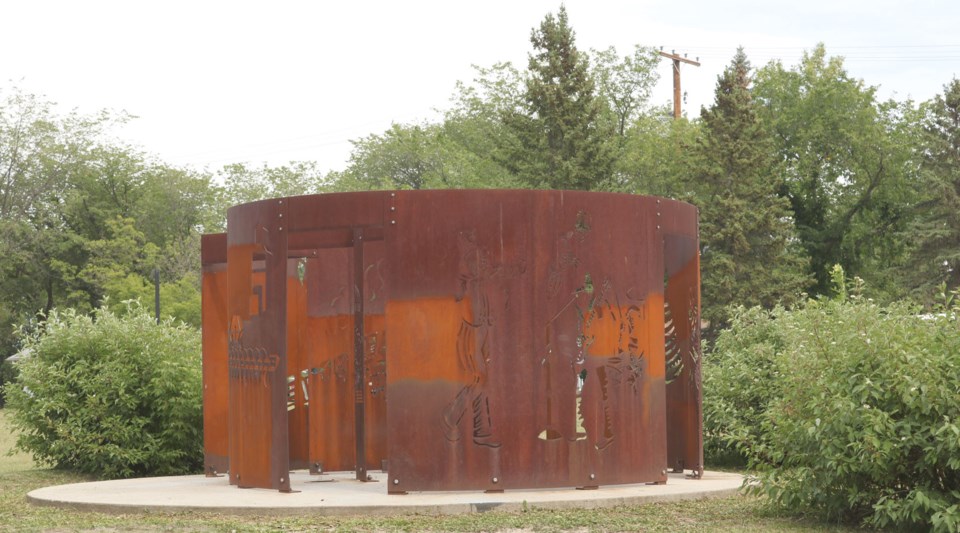A new City brochure invites residents and visitors to explore the public art spotted across our community.
It’s a great idea, and it is likely most, even life-long residents, will believe the list encompasses 26 sites, and a rather varied array of art from a painted church ceiling to various murals, sculptures and galleries.
The idea of the walk isn’t quite new, a map long ago existed says Lisa Washington, Community Development Manager Community Development, Parks & Recreation with the City, but like most things was in need of an update. In a year when finding safe activities to do for summer fun in the face of COVID-19, a new guide to our city’s art is a timely release.
The brochure should also be the impetus for some reflection on the idea of community art, and how it is some way an opportunity we let slip through our fingers.
If we think back as a community to around the year 2000 a new century was burgeoning, and the city was looking for ways we might make ourselves stand out among the many trying to attract visitors and investment.
The idea of creating community art was soon at the top of the list of ideas, and speakers were brought in to tell the stories of how community art had been at the heart of redevelopment efforts in other communities.
We bought into the idea, and ‘Grassroots’ by Linda Kielback and the City Centre Park mural by Grant McLaughlin would soon be developed. They were a fine start to a vision that at the time had art on walls across the downtown.
But, drive around the downtown today, and major murals never followed the initial pair, which remain somewhat lonely, and a testament to a community art vision unfulfilled.
Walls remain of course that would be prime for murals, the north facing wall of the Plum Tree is a great example.
Then in 2005, to mark the province’s centennial a sculpture was gifted to the city. That gift is the ‘Doorways to Opportunity’ by Lionel Peyachew at Shaw Park.
The installation briefly fostered the idea of turning the park into a sculpture park, with a vision of additional works on the four corners of the park.
Again, the idea never quite took flight.
But, that is the great thing about good ideas, they don’t go out of style.
The aforementioned art pieces still exist as do numerous places which could be home to new sculptures or murals.
What is required though is a push to create the art. That is where the City can step in. Since it is public art, the public should be invested in its creation. That does not mean paying the bill, at least not with direct cash outlay.
But, like many improvements in the city, the municipality could offer a multi-year tax abatement of a percentage of the art cost – as an example 50 per cent rebated over four years. The impact to the taxes collected would be limited, but the resulting art would be a community asset for years.




